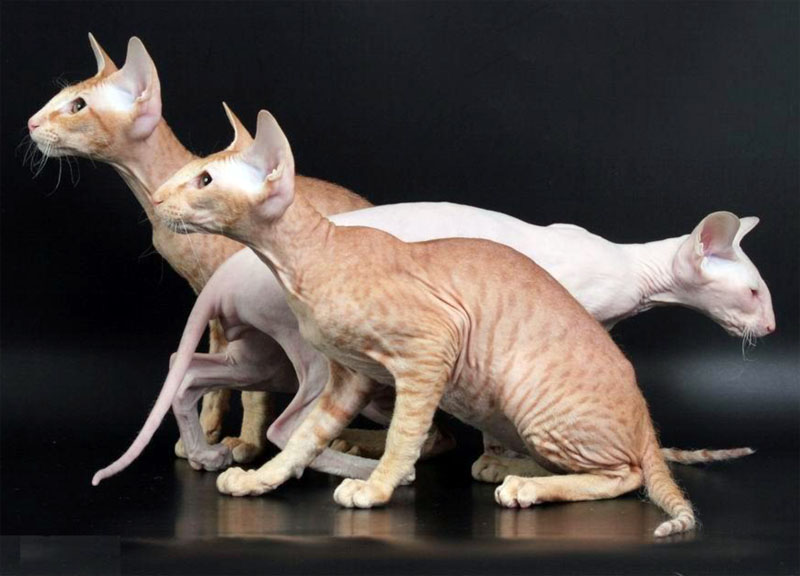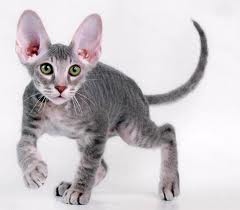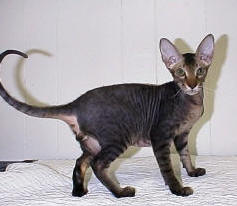



|
Peterbald Description
A study in form, the Peterbald is a shining example of the ideal feline shape. The head is a long, inverted triangle stretching from pointed ear tips to blunted muzzle. The ears are extra large, slightly flared and broad at the base. Eyes are medium in size, nearly almond in shape and set obliquely; neither protruding nor recessed. The body of the Peterbald is medium in size, and graceful. This is a fine boned feline, with long legs and oval feet; toes are prominent but pads are not. The tail should be strong and whiplike.
The Peterbald comes in five coats: Ultrabald, Flock or Chamois, Velour, Brush and Straight. Ultrabald Peterbalds are born without hair and never grow any. They have soft, warm and sticky skin and lack eyebrows and whiskers. Flock or Chamois are 90% hairless. The hair that they do have is not visible and leaves the skin with a soft, smooth feeling. There is no fur resistance and they do not feel sticky. Their whiskers and eyebrows will be kinked and curled. Velour cats are 70% hairless and seem to have a soft, downy peach fuzz like coat. Some cats may lose hair as they age developing a Flock or Chamois coat. Brush coats are wiry and up to five millimeters long. Kitten born with a brush coat may lose it and become bald; whiskers are kinked or curled. Straight coated kittens do not have the hair loss gene.
Peterbald Temperament
Intelligent and affectionate, the Peterbald will entertain you and endear itself to you. They love to be with their people, enjoy other pets and get along with children. Highly social, these cats need a companion and should never be left alone for long periods of time. They will always want to be wherever their family is.
Peterbald Care
Though no grooming is necessary, owners of hairless cats should always be careful to protect them from sunburn and cold. Additionally, regular bathing is important to prevent the build up of oils and dirt as they do not have a hairy coat to prevent these from corroding the skin. If purchasing from a breeder, always investigate any hereditary or genetic conditions and have any kittens examined by a vet before purchasing.
Peterbald History
A cross between the Russian Donskoy and the Oriental Shorthair, the Peterbald was developed in 1993 when Afinguen Myth, a brown tabby Donskoy, was bred to Radma Vom Jagerhof, an Oriental Shorthair female. Their offspring were quite popular in St. Petersburg, Russia, and they were quickly pronounced Peterbalds. New breeding lines were created as Peterbalds were consistently bred out to Donskoy, Oriental Shorthairs and Siamese. TICA accepted the Peterbald in 1997 and recognized them for championship status in 2005.
|